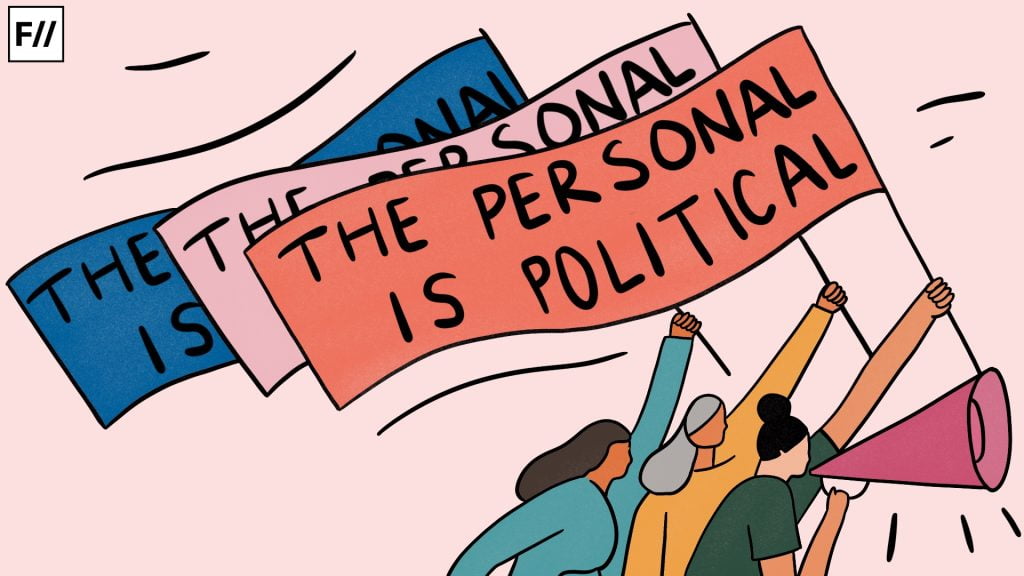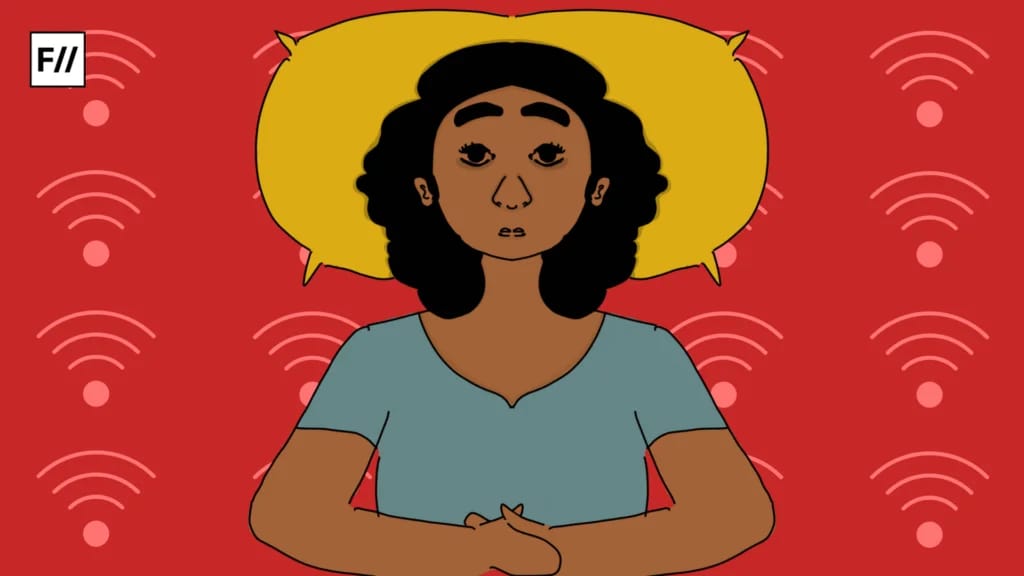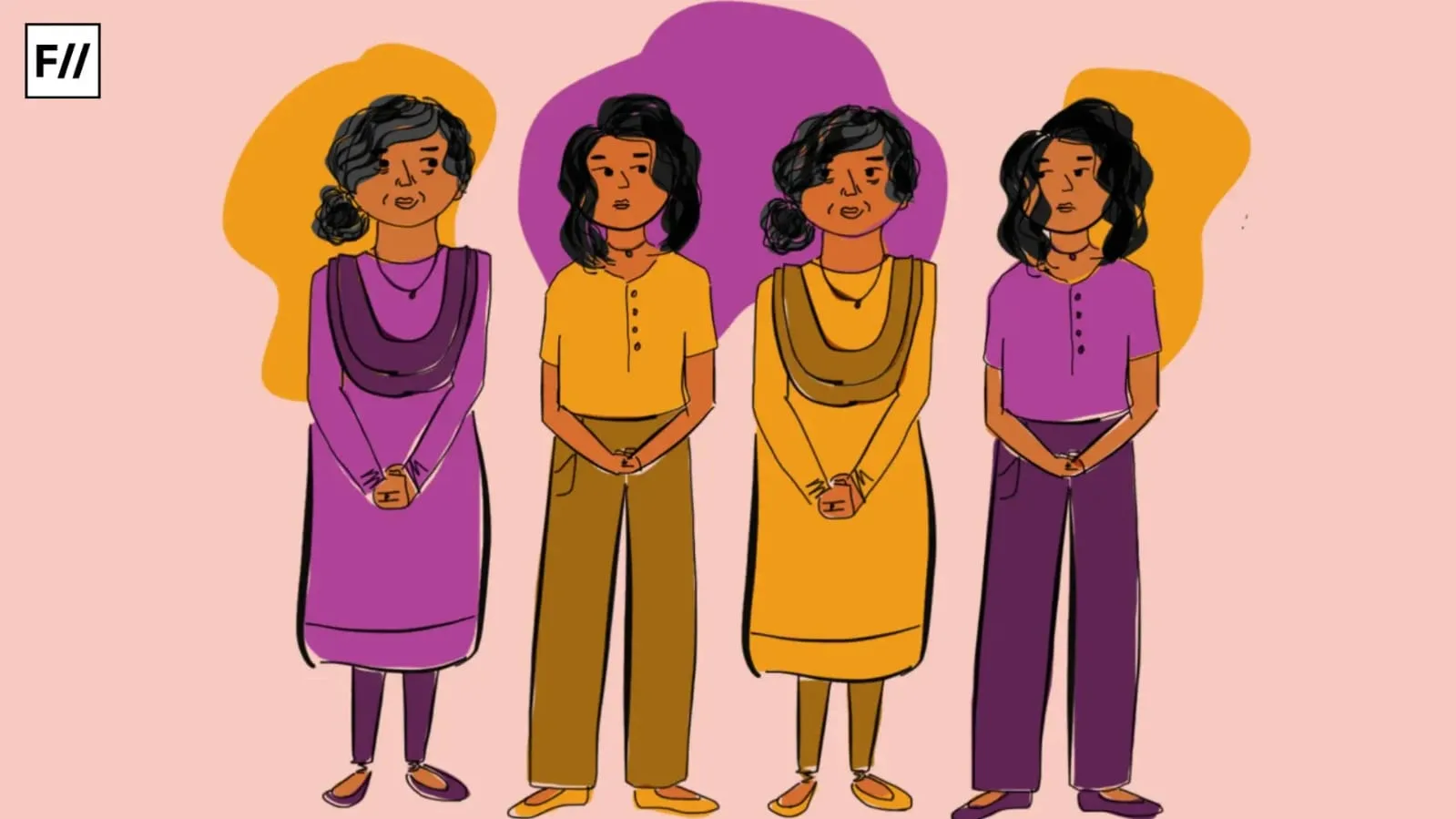The etymology of the word imposter originates from the Latin root “impostorem” which means “impose upon or deceive.” Imposter Syndrome is essentially a condition where one is constantly speculating about their worth and questioning their achievements or distinctions in career, academics as well as personal relationships. The feeling of not belonging to a particular arena, inauthentic being and a perpetual anxiety of being “caught” as an outsider is fundamental to Imposter Syndrome. It is also termed as impostorism or imposter phenomenon.
Although it is not recognised as a pathological condition in the medical discourse it involves affective, doxastic and behavioral features or symptoms. It is interesting to note that people with Imposter Syndrome often debar empirical evidence of achievements, positive results, appreciative co-workers and even their position in academics, workplace or elsewhere.
Gender-ing/ed impostorism
The trajectory of the development of this syndrome’s concept has been seen as a phenomenon that is often gendered. Pauline Clance and Sunzanne Imes in a 1978 article “The Imposter Phenomenon in High Achieving Women” suggested that high-achieving women in respective fields are prone to this syndrome along with the related mental health issues. This very article first coined imposter syndrome as a concept. Later development in the discourse found that this syndrome is not limited to women and men can also experience this syndrome in their personal and professional lives. This becomes more relevant when we look at intersectional identities of men from marginalised communities.

Various cultural factors come into play to encode impostorism in an individual. Michelle Obama in describing her battle with this phenomenon said the status quo holds a power to make women, racial minorities, immigrants and working-class people to experience a situation where they feel that they don’t “belong.” Her advice to young women who experience the Imposter Phenomenon is to be patient with themselves as they keep going because the process of undoing this syndrome takes a lifetime.
Locating imposter syndrome in culture
Mental health issues cannot be seen in isolation of cultural context. Policies of Inclusivity, affirmative action and mottos of promotion of diversity in higher education institutions as well as government opportunities often get linked to a question of one’s own abilities leading to impostorism. Imposter Syndrome disproportionately affects individuals from marginalised communities in various societies. High-achieving women, people from lowered castes, people from ethnic, racial and religious minorities often become vulnerable to questioning their own being in the mainstream; where the norm has historically tagged them as “the other” or “the outsider.”

George P. Chrousos writes that this syndrome has the potential to become a threat to diversity and inclusivity. At the level of higher education this syndrome can be attached to the increasing rates of dropouts of people from marginalised communities from prestigious institutions especially in STEM (science, technology, education, mathematics). According to data of Ministry of Education quoted in a parliamentary proceeding, dropouts from undergrad courses at the top seven IITs comprised 63 per cent of students from reserved categories. At IIT Delhi the percentage was as high as 76 per cent and at IIT Guwahati it was 88 per cent.
Chrousos while addressing the issue adds that institutes must address this absence-presence of this syndrome by initiating accessible mental health care facilities and outreach programmes for students and research scholars. Learning to set realistic expectations and acknowledgement of one’s own abilities can become affirmative skills in this regard.
Popular representations of imposter syndrome
The 2021 Disney film Encanto is an interesting example of the merger of intersectional identities and imposter syndrome. The extraordinary family of the Madrigals and the responsibilities of the title makes the protagonist, Mirabel, prone to self-doubt and low self esteem. Even Luisa with miraculous physical strength displays anxiety and self-doubt despite of her capabilities. The song “Under the surface” describes that under the facade of the perfectionist, the person at concern is experiencing a peculiar emotional and psychological pressure.
In the Indian context, such experiences can be found in the lives of Dalit narratives. In Omprakash Valmiki’s “Joothan,” for example, throughout his life he inculcates a feeling of not belonging to the literary circle he is a part of, metropolitan cities and the society altogether. Assertion of one’s identity becomes the only way to break this cycle.
Erasing self/other binaries
Imposter Phenomenon has come to be seen as a “public feeling” in the last few years, especially in higher education. This is to widen the ambit of our understanding of marginalisation in respect of Queer, caste and race and gender studies and identify spaces that can become a site of discussion and carve political agency and intervention.

Imposter syndrome haven often been associated with an individualised and personal condition. However, as it’s culmination into a lived experience is a political history the discourse to overcome it should also begin with a community. The feminist slogan of “the personal is political” is an apt assertion of this argument. When impostorism is described as a public feeling, it widens the scope of discussion and forge unique comradeships.
Although Imposter Phenomenon is not acknowledged as a medical condition. It’s association with other medical condition paired with the lived experiences of people makes it relevant and consequential issue. As it is intertwined with the socio-historical underpinnings, ways of it must be addressed at a community level. Individual efforts of assertion of one’s being along with reforms in institutional structures and affirmative action policies both must go hand in hand to comfort people with Impostorism.
References
- Breeze, Maddie. “Imposter Syndrome as a Public Feeling.” Feeling Academic in the Neoliberal University, 2018, pp. 191–219, https://doi.org/10.1007/978-3-319-64224-6_9.
- Chrousos, George P., and Alexios-Fotios Mentis. “Imposter Syndrome Threatens Diversity.” Science, edited by Jennifer Sills, vol. 367, no. 6479, Feb. 2020, pp. 749.2-750, https://doi.org/10.1126/science.aba8039.
- Gadsby, Stephen. “Imposter Syndrome and Self-Deception.” Australasian Journal of Philosophy, vol. 100, no. 2, Feb. 2021, pp. 1–15, https://doi.org/10.1080/00048402.2021.1874445.
- Omprakash Vālmīki, and Arun Prabha Mukherjee. Joothan an Untouchable’s Life. New York Columbia Univ. Press C, 2003.
- Special Correspondent. “Parliament Proceedings | 60% of Dropouts at 7 IITs from Reserved Categories.” The Hindu, 6 Aug. 2021, www.thehindu.com/news/national/parliament-proceedings-60-of-dropouts-at-7-iits-from-reserved-categories/article35752730.ece.
- Walt. “‘Under the Surface’ Clip | Disney’s Encanto.” YouTube, 26 Nov. 2021, www.youtube.com/watch?v=KYOGq9qwMZg.
About the author(s)
Anchal is a writer, poet and spoken word artist based in New Delhi. Her works have been published on various platforms, including Enroute Indian History Blogs, Indian Review E-Journal and department and annual magazines of Miranda House, Kirori Mal College and Gargi College. Currently, she is pursuing an MA in English at Jawaharlal Nehru University, New Delhi and loitering around the city.






Deconstructing imposter syndrome sheds light on the deep-rooted anxieties many face regarding their identities and achievements. It’s vital to recognize how societal pressures contribute to these feelings of inadequacy. Understanding this phenomenon can empower individuals to embrace their successes and cultivate a healthier self-perception!